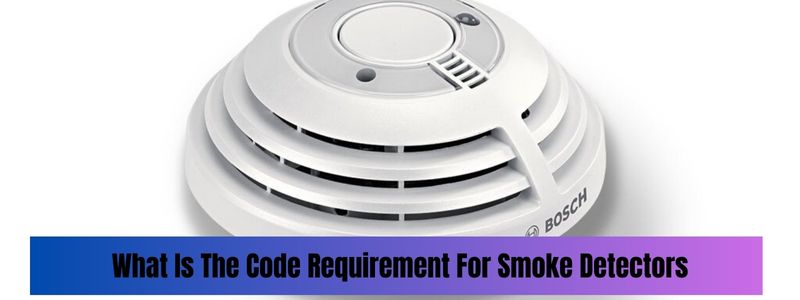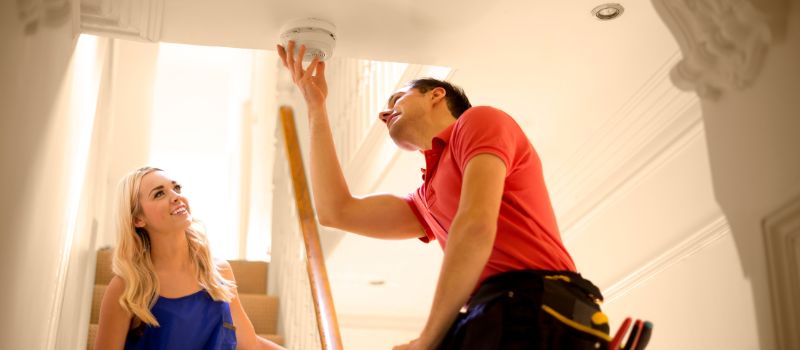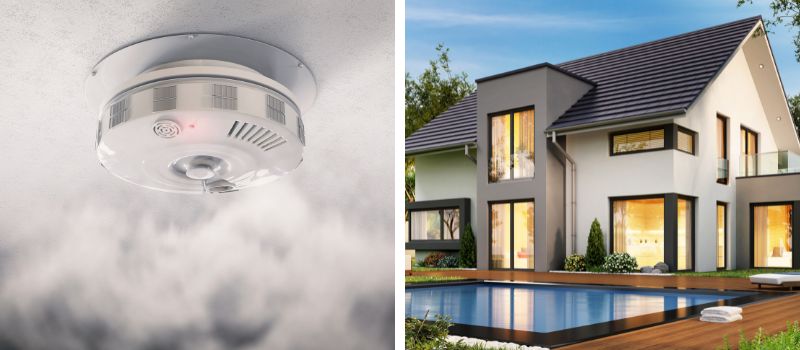Smoke detectors are vital devices that play a crucial role in safeguarding our homes and families from the devastating effects of fires. To ensure maximum effectiveness, it’s important to understand the code requirements for smoke detectors. This article will guide you through the latest regulations and guidelines set forth by industry professionals, offering expert advice to enhance safety and provide peace of mind.
what is the code requirement for smoke detectors
Different cities and types of buildings have different rules about smoke detectors. Codes usually require smoke alarms in every room where people sleep and outside sleeping areas, with extra coverage in public areas.
Codes may define ionization and photoelectric types, installation heights, power sources (hardwired or battery), and how devices connect to each other. To make sure that smoke alarms are installed and working correctly, they need to be maintained, tested, and in line with local building codes.
Why Are Smoke Detectors Important?
Smoke detectors serve as early warning systems, detecting the presence of smoke in its early stages. By promptly alerting occupants to the danger, smoke detectors provide valuable time to evacuate and call emergency services. These devices have been proven to save lives and minimize property damage in the event of a fire.
Current Code Requirements
The National Fire Protection Association (NFPA) has established comprehensive code requirements for smoke detectors to ensure consistent safety standards across residential and commercial buildings. It’s essential to adhere to these regulations to guarantee the effectiveness of your smoke detector system. Here are some key code requirements to consider:
- Placement and Quantity: Install smoke detectors in every sleeping area, outside each bedroom, and on every level of the house, including the basement. This ensures maximum coverage throughout the entire residence.
- Interconnection: Interconnect all smoke detectors within the same dwelling. This allows for simultaneous activation, ensuring that when one detector is triggered, all detectors will sound an alarm. This interconnected system provides early warning even if the fire originates in a remote part of the house.
- Power Source: Smoke detectors must be hardwired into the building’s electrical system with a battery backup. This ensures continuous operation, even during power outages. Regularly test the batteries and replace them as needed.
- Type of Smoke Detectors: The NFPA recommends using photoelectric and ionization smoke detectors or a combination of both. Photoelectric detectors are highly effective at detecting smoldering fires, while ionization detectors are better suited for fast-flaming fires. Combining these types offers comprehensive protection.
- Maintenance and Testing: Regularly inspect and clean your smoke detectors to ensure they are free from dust and debris. Test the detectors monthly to verify proper functioning, and replace any units that are over 10 years old.
Ensuring Compliance
To ensure compliance with code requirements, it’s recommended to consult local building codes and regulations, as they may have additional specifications or variations. It’s crucial to work with certified professionals who have expertise in smoke detector installation and maintenance to guarantee proper compliance with all safety standards.
Commonly asked questions
What are the code requirements for smoke detector placement?
According to code requirements, smoke detectors should be placed in every sleeping area, outside each bedroom, and on every level of the house, including the basement. This ensures comprehensive coverage throughout the entire residence.
How should smoke detectors be interconnected as per code requirements?
Code requirements state that smoke detectors within the same dwelling should be interconnected. This ensures that when one detector is triggered, all detectors will sound an alarm simultaneously, providing early warning even if the fire originates in a remote part of the house.
What is the recommended power source for smoke detectors as per code requirements?
Code requirements specify that smoke detectors should be hardwired into the building’s electrical system with a battery backup. This ensures continuous operation, even during power outages. It is important to regularly test the batteries and replace them as needed.
What types of smoke detectors are recommended by code requirements?
Code requirements recommend using photoelectric and ionization smoke detectors or a combination of both. Photoelectric detectors are highly effective at detecting smoldering fires, while ionization detectors are better suited for fast-flaming fires. Combining these types offers comprehensive protection.
How often should smoke detectors be tested and maintained as per code requirements?
Code requirements emphasize the importance of regularly testing and maintaining smoke detectors. It is recommended to test the detectors monthly to ensure proper functioning. Additionally, it is crucial to inspect and clean the detectors periodically to remove dust and debris. Smoke detectors that are over 10 years old should be replaced.
Conclusion
Understanding the code requirements for smoke detectors is essential for creating a safe living environment. By following the regulations and guidelines set forth by the NFPA and local authorities, you can ensure maximum protection for your home and loved ones.
Remember to regularly test and maintain your smoke detectors to guarantee their effectiveness. By prioritizing safety and adhering to these code requirements, you can enjoy peace of mind knowing that you have taken significant steps to protect what matters most.

Edward’s expertise in smoke detectors is particularly noteworthy. He has conducted extensive research on the latest advancements in smoke detector technology and has worked closely with manufacturers to develop cutting-edge products that can detect fires more accurately and quickly.




